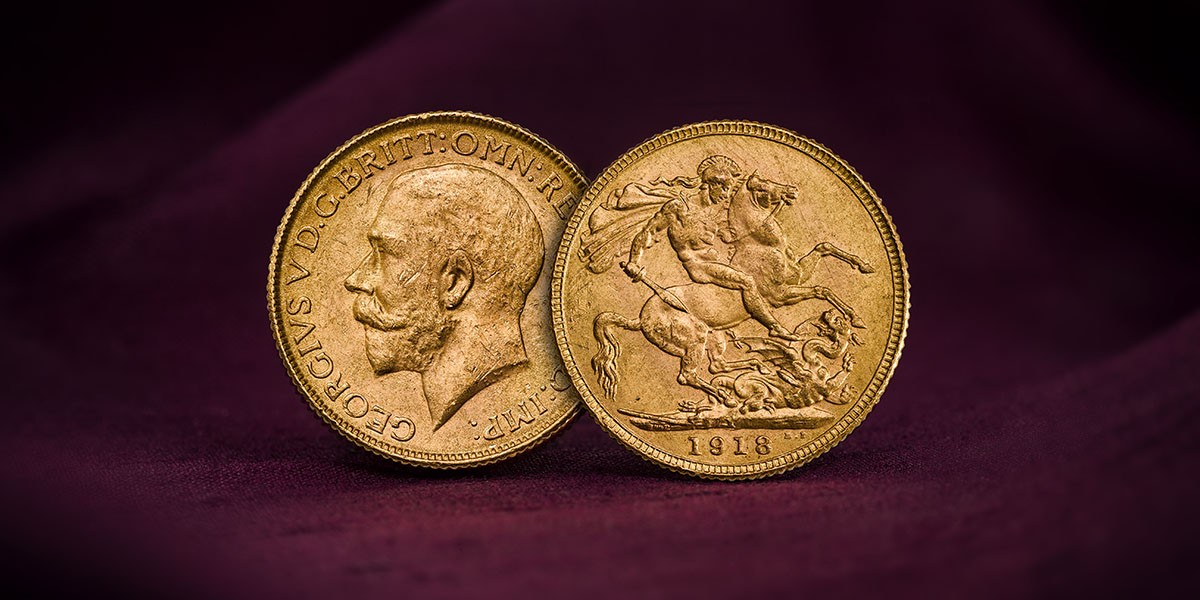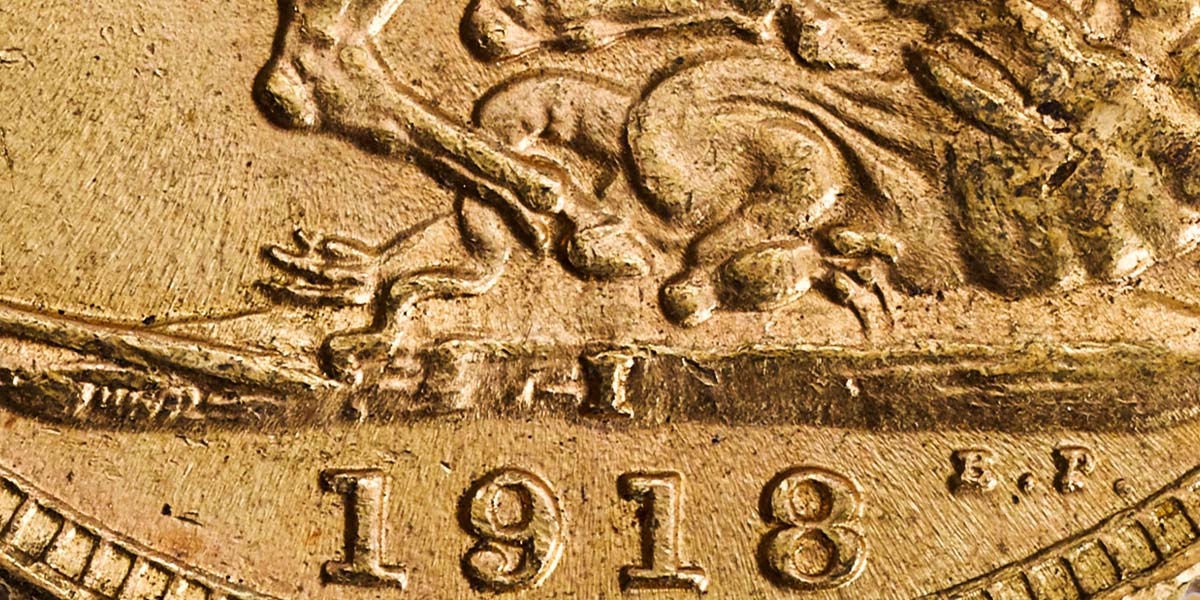In 1914, the United Kingdom’s coinage was the envy of the world, with The Sovereign regarded as the pinnacle of the standards we maintained. However, the First World War brought an end to a golden age of Sovereign production in the UK. As the conflict spread throughout Europe, the UK needed gold bullion, a finite resource, to help finance the war effort.

Although India didn’t experience a gold rush of its own, gold bound for London from South Africa was diverted to the region due to naval blockades during the First World War. A branch mint was therefore established in India and, for one year only, Sovereigns were struck in Bombay (now Mumbai).
An Established Coin
During the nineteenth century, India had its own distinctive gold coinage, yet Imperial Sovereigns and Half-Sovereigns were also used. According to an entry in the Gazette of India from 1866, bankers and merchants in the country actively sought out Sovereigns as ‘a medium of reserve wealth’.
The early Sovereigns struck in the branch mint in Sydney, Australia, were particularly popular in India on account of their yellow colour in contrast to the redder Sovereigns produced in London. Many Indian banks employed agents in the Australian goldfields to buy the gold at source, to be minted and then sent via Sri Lanka to India.
Calls for an Indian Branch Mint
At the turn of the century, the Deputy Master of the Mint, based in London, predicted that new branches would soon open ‘in the East and West of the Empire’. The Deputy Master at Melbourne was asked to investigate the possibility of establishing a branch mint in the vicinity of the Indian mint in Bombay at the time, but as a legally separate operation.
Although the scheme was shelved by the Home Secretary in 1903, requests from the Indian Government to mint Sovereigns in the country resurfaced in 1917. Construction of the Bombay branch mint concluded in May 1918 and the dies, plant and machinery arrived from London the following month. Automatic weighing machines and two coining presses arrived in early August and the first coinage was issued on 15 August 1918.
Under the new Deputy Master, R. R. Kahan, 1,294,372 Sovereigns were struck at the branch mint in Bombay, distinguished from other Sovereigns by the inclusion of a small ‘I’ mint mark for India.

A Fleeting yet Fruitful Operation
By 1919, no blanks were forthcoming and following the end of the First World War, the Bombay branch mint ceased production and closed. Despite its short operating span, it struck more Sovereigns in its single year of operation than the Canadian branch mint in Ottawa produced in more than two decades.
Each Sovereign produced at the Bombay branch mint portrays Benedetto Pistrucci’s iconic St George and the dragon design on its reverse, which is now synonymous with the ‘chief coin of the world’. The obverse of the 1918 George V Sovereign features a portrait of the monarch facing left, created by Australian sculptor Bertram Mackennal.
Specification
| Specification | Value |
|---|---|
| Denomination | Sovereign |
| Alloy | 22 Carat Gold |
| Weight | 7.98 g |
| Diameter | 22.05mm |
| Reverse Designer | Benedetto Pistrucci |
| Specification | Value |
|---|---|
| Obverse Designer | Bertram MacKennal |
| Quality | Circulating |
| Year | 1918 |
| Pure Metal Type | Gold |
| Mint Mark | I |
